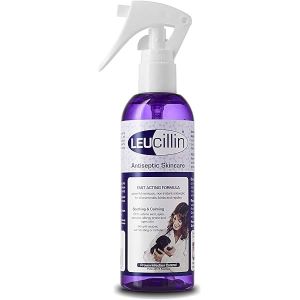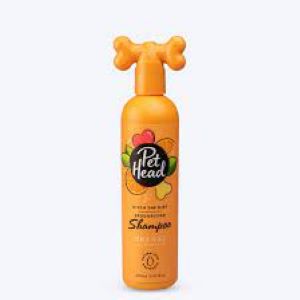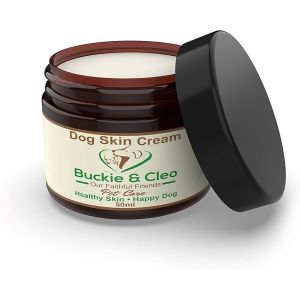You might have seen doctors using Hibiscrub to disinfect their hands in hospitals. Even you might be using it at home to prevent the spread of bacterial infection on minor wounds. But have you thought of using it on dogs? Can you use Hibiscrub on dogs? If yes, then can it be used in the same way as we do? How to use Hibiscrub on dogs?
Hibiscrub is an antiseptic skin cleanser and can be used to treat the skin issues of a dog. If used properly, it is safe for external usage on a dog’s skin. Let us explore how to use Hibiscrub on dogs.

You Might Also Like:
How to Use Hibiscrub on Dogs
Hibiscrub is an antimicrobial skin cleanser, which helps to prevent infections by killing germs on the skin. It has been used for many years in hospitals around the world to help manage infection. Moreover, it is used routinely as an antiseptic hand-washing preparation in hospital wards to help prevent the spread of bacteria, fungi and viruses between patients.
Hibiscrub contains a 4% chlorhexidine gluconate solution, which is its main active ingredient. It is used to disinfect the hands and skin before or after an operation(pre and post-operative hand and skin disinfection/antisepsis). It is also used to disinfect hands after handling infected materials.[1]
Hibiscrub being safe for dogs does not mean that it can be used directly on the wound. As a paw parent, you must follow a systematic approach to benefit your dog from the usage of this medication. Applying concentrated Hibiscrub may irritate the dog’s skin, hence start by diluting it.
Firstly, you should dilute the solution. Generally, vets recommend a dilution ratio between 1:10 to 1:30. Some dogs need a more diluted solution whereas others can tolerate concentrated ones. Hence, it is better to consult a local vet for effective guidance on the ratio of dilution suitable for your dog.
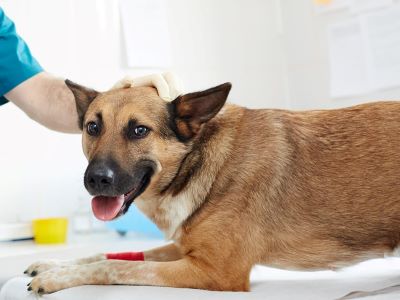
Application on Targeted Areas
If your dog is having a minor cut or scratch, you can apply this diluted solution directly to the wound. Make sure to avoid contact with sensitive parts of your dog like eyes, ears and nose.
However, it is better to clean the wound with warm water before application. Now, let the solution rest for a few minutes. If the wound is not major, you can even rub the solution until it starts foaming. The foam may improve the healing process.
At last, rinse the solution with warm water and pat dry the skin with a clean cloth. Do not use cold water as it can cause irritation to the skin afterwards. Also not to rub the cloth against the skin for wiping the wet skin.
Application on Whole Body
Some parents bathe their dogs with Hibiscrub to get rid of flea infections. For this, you need to wet the fur of your dog thoroughly and apply the diluted solution all over the body. Gently massage the fur and skin to cleanse them. As mentioned, be careful with the sensitive parts.
After application, wait for a few minutes for the antiseptic to work on the dog’s body. Eventually, rinse off the solution properly so that it does not cause discomfort or irritation to the dog. Pat him dry with a clean cloth. You may also use a dryer for this purpose.
Oral Care Using Hibiscrub
The active ingredient of Hibiscrub, chlorhexidine gluconate, works efficiently to combat various infections, including gum infections.[2] However, when using Hibiscrub for oral purposes, you need to be a little careful. This is because there may be chances that your dog swallow the solution.
You can apply the diluted solution directly to the dog’s inner cheek and gums. While applying the solution, tilt your dog’s head downwards so that the excess amount runs out of the mouth. Using Hibiscrub can help keep their mouth free from harmful bacteria.
How Hibiscrub Can Be Useful for Dogs?
Just like us, your dog too can take advantage of Hibiscrub. Dogs may suffer from skin problems like itchiness, which causes dogs to scratch and tear their skin open. This could result in possible bacterial infection. To avoid this, you must take care of your Fido and protect him from germs and bacteria.
“Bacterial skin infection occurs when the skin’s surface has been broken, the skin has become injured due to chronic exposure to moisture, the normal skin bacteria have been altered or changed, the blood flow to the skin has become impaired, or the immune system has been suppressed.“, confirms Ryan Llera and Ernest Ward at VCA hospitals.
Hibiscrub can be used for skin problems in dogs, to prevent infection and for oral care. According to professionals, it is absolutely safe to use this medication for dogs. It can be used applied to areas where the infection is highly contagious. This may include an intense skin infection, halitosis or moist eczema. Moreover, Hibiscrub can be useful to fight flea infection.
Are There Any Side-Effects to Hibiscrub?
Hibiscrub serves many advantages for your pet, though if not used properly can have detrimental effects. It is composed of chemicals and negligence in its usage and dosage may have side effects on your dog. Hence, it is crucial to take appropriate measures while using Hibiscrub.
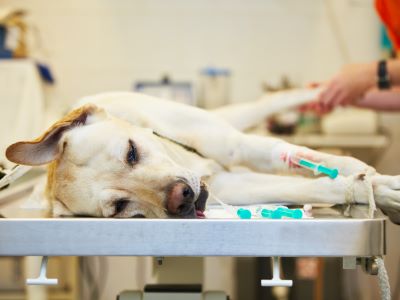
You should never apply Hibiscrub, even the diluted solution on open wounds. While cleaning the harmful bacteria of the affected site, it also clears new healing cells. Thus, the solution is only advised when the wound is no more exposed.
Some dogs may be sensitive or allergic to chlorhexidine and thus exposing their wound to Hibiscrub may lead to serious consequences. Some common side effects of this include irritation, redness and swelling of the wound. If such reactions are visible, immediately rinse off the area and consult a vet.
Make sure your pup does not swallow or lick the area where the solution is applied. Swallowing chlorhexidine may harm your dog. Though a little amount does not make any difference, you should be cautious. You may put an Elizabethan collar on to prevent your dog from licking off the solution.
FAQs
Should I rinse Hibiscrub off my dog?
You should apply Hibiscrub and let it rest for 3-5 minutes to be most effective against bacteria, viruses and fungi, then thoroughly rinse off. The emollients present mean that even with frequent use, they will be gentle on the skin and should not cause dryness.
What is the correct dilution for Hibiscrub?
Hibiscrub should be very very diluted, at least a 1:20 dilution but most owners use a solution which is too concentrated. Thus, a recommended dilution ratio is between 1:10 to 1:30. Undiluted Hibiscrub is a bright pink colour, but when added to water in the correct concentration it should barely change the colour of the water.
Will Hibiscrub help my dog’s itchy skin?
Hibiscrub is a dog antibacterial wash that can be used to clean cuts, stitches, wounds, and injuries on cats and dogs. Hibiscrub forms a protective layer on the skin, without being absorbed, that can kill bacteria and aid against itchy skin.
Is it OK if a dog licks Hibiscrub?
Hibiscrub contains chlorhexidine solutions and it should not be ingested. While chlorhexidine is not especially toxic to dogs, signs of digestive upset could occur. If using it for oral and dental health, always make sure that your dog does not swallow it. Also, Hibiscrub should be a low-percentage solution designed for safe oral use.
Overview
To conclude, Hibiscrub can be used on the dog to disinfect his wounds and minor cuts. However, the main concern is how to use Hibiscrub on dogs because the skin of some dogs might be more sensitive and allergic to such chemicals.
Hence, you should use diluted solution on dogs rather than concentrated. Also, it is advisable to consult a vet before exposing your dog to Hibiscrub. Hope this article helped you answer your query.
References:
- Field, E. A., & Martín, M. (1986). Disinfection of dental surgeons’ hands with detergent preparations of triclosan and chlorhexidine. Journal of Dentistry.
- Dental sprays. (2023, May 5). Cornell University College of Veterinary Medicine.
